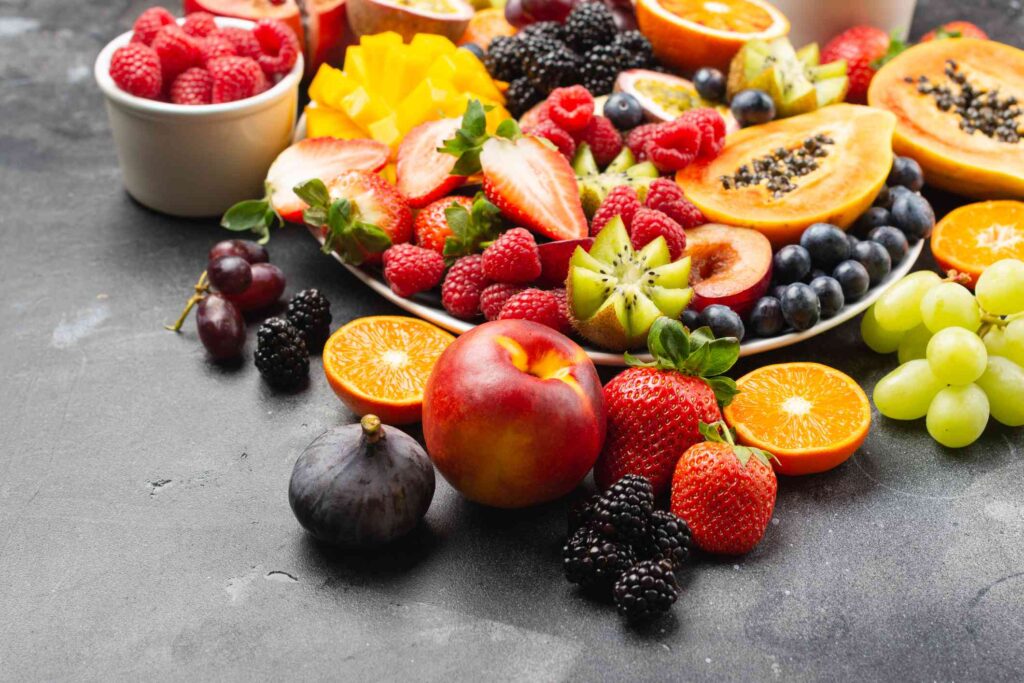
Imagine biting into a juicy, sun-ripened peach, its sweet nectar dripping down your chin as you savor the taste of summer. That’s the magic of local fruits—nature’s candy, grown close to home, bursting with flavor and nutrients. Eating local fruits isn’t just a treat for your taste buds; it’s a powerful way to boost your health, support your community, and live sustainably. In this guide, we’ll explore why local fruits are a game-changer for your well-being, how to incorporate them into your diet, and practical tips to make the most of what your region offers. Whether you’re a health enthusiast or just someone who loves good food, this journey into the world of local fruits will inspire you to eat better and feel amazing.
Why Local Fruits Are a Health Powerhouse
Local fruits are more than just fresh—they’re nutritional dynamos. Picked at peak ripeness, they retain higher levels of vitamins, minerals, and antioxidants compared to fruits shipped from afar. According to Harvard Health, fresh fruits are rich in fiber, vitamins like C and A, and phytochemicals that fight inflammation and reduce disease risk. When you eat a locally grown apple, you’re not just getting a snack—you’re fueling your body with nutrients that support heart health, immunity, and digestion.
But what makes local fruits stand out? They spend less time in transit, meaning they’re not subjected to long storage or artificial ripening processes that can degrade nutrients. For example, a study from The University of California, Davis found that strawberries lose significant vitamin C content after just a few days of storage. By choosing fruits from nearby farms, you’re getting produce that’s as close to its natural state as possible—vibrant, flavorful, and packed with goodness.
Beyond nutrition, eating local connects you to your environment. It’s a small act of mindfulness, appreciating the seasons and the land that nourishes you. I remember my first visit to a local orchard—picking crisp apples straight from the tree felt like a gift from nature itself. That connection to food is something you can’t get from a supermarket’s imported produce aisle.
The Science Behind Local Fruits and Your Health
Let’s dive into why local fruits are so good for you. Fruits are nature’s multivitamins, loaded with essential nutrients that support every system in your body. For instance, locally grown berries like blueberries and raspberries are rich in antioxidants called anthocyanins, which The National Institutes of Health links to reduced inflammation and improved cognitive function. Eating these fruits fresh from a nearby farm ensures you’re getting the maximum antioxidant punch.
Local fruits also tend to have lower pesticide residues. Small-scale farmers often use sustainable practices, reducing the need for harsh chemicals. A report by The Environmental Working Group notes that conventionally grown fruits like strawberries and peaches can carry significant pesticide loads, which may pose health risks over time. Choosing local, especially organic, minimizes your exposure to these chemicals, giving your body a cleaner source of nutrition.
Then there’s the gut health angle. Fruits like apples and pears, often abundant at local markets, are high in fiber, which feeds beneficial gut bacteria. According to The Mayo Clinic, a healthy gut microbiome supports digestion, immunity, and even mental health. I once swapped out processed snacks for local plums for a month and noticed my energy levels soar—no afternoon slumps! It’s amazing how something as simple as fruit can transform how you feel.
How to Find and Choose the Best Local Fruits
Finding local fruits is easier than you might think, and the rewards are worth the effort. Start by visiting farmers’ markets, where you can meet growers and sample their offerings. Websites like LocalHarvest make it easy to locate markets and farms near you. Look for fruits that are in season—think strawberries in spring, peaches in summer, or apples in fall. Seasonal produce is not only tastier but also more affordable and nutrient-dense.
When choosing fruits, let your senses guide you. A ripe peach should feel slightly soft and smell sweet. Berries should be plump and vibrant, not mushy. Don’t shy away from “imperfect” fruits—those oddly shaped apples or slightly blemished pears are often just as delicious and nutritious. I learned this lesson at a local farm stand when I picked up a bag of quirky-looking plums. They weren’t Instagram-perfect, but their flavor was out of this world.
If farmers’ markets aren’t accessible, consider joining a Community Supported Agriculture (CSA) program. CSAs deliver seasonal produce straight from local farms to your doorstep. The USDA’s website offers a directory of CSA programs across the country. It’s like having a farmer as your personal shopper, ensuring you get the freshest fruits possible.
Incorporating Local Fruits into Your Daily Diet
Now that you’ve got your hands on some gorgeous local fruits, how do you make them a regular part of your life? It’s easier than you think, and the possibilities are endless. Here are some practical, delicious ways to weave local fruits into your meals and snacks:
- Breakfast Boost: Add sliced local peaches or berries to your morning yogurt or oatmeal. The natural sweetness makes it feel like dessert, but it’s packed with nutrients. I love tossing chopped apples into my smoothie with a dash of cinnamon—it’s like drinking apple pie.
- Salads with a Twist: Toss local fruits like pears or citrus segments into green salads for a burst of flavor. A study from The American Heart Association suggests that combining fruits with greens increases nutrient absorption, making your salad a health powerhouse.
- Snacking Smart: Keep a bowl of local fruits like cherries or plums on your counter for easy grabbing. They’re perfect for curbing cravings without the guilt of processed snacks.
- Desserts Done Right: Bake local apples with a sprinkle of oats and honey for a healthy dessert. Or blend frozen local berries into a sorbet for a refreshing treat.
- Preserve the Season: If you’ve got an abundance of fruit, try making jams or freezing them for later. The National Center for Home Food Preservation has great guides on safely preserving fruits to enjoy year-round.
The key is to experiment and have fun. Eating local fruits doesn’t mean you’re stuck with plain apples—get creative and let their flavors shine.
The Environmental and Community Benefits of Eating Local
Eating local fruits isn’t just good for your body; it’s good for the planet and your community. Local produce requires less transportation, reducing carbon emissions. According to The Union of Concerned Scientists, food transport accounts for a significant portion of agriculture’s carbon footprint. By choosing local, you’re helping shrink that impact.
You’re also supporting small farmers who pour their hearts into growing quality produce. Buying directly from them keeps money in your local economy and fosters community connections. I’ll never forget chatting with a farmer at my local market about her heirloom apples—it felt like I was part of something bigger than just a grocery run.
Plus, local farming often prioritizes sustainable practices, like crop rotation and reduced pesticide use, which protect soil health and biodiversity. It’s a win-win: you get healthier food, and the environment gets a break.
Comparison Table: Local vs. Imported Fruits
Local vs. Imported Fruits: Which Is Better for Your Health?
| Aspect | Local Fruits | Imported Fruits |
|---|---|---|
| Nutrient Content | Higher due to peak ripeness and minimal storage time | May lose nutrients during long transport and storage |
| Taste | Fresher, more vibrant flavors | Often less flavorful due to early harvesting |
| Pesticide Exposure | Often lower, especially with organic or sustainable farms | Higher, as commercial farms may use more chemicals |
| Environmental Impact | Lower carbon footprint due to reduced transportation | Higher carbon footprint from long-distance shipping |
| Community Support | Supports local farmers and economies | Benefits large-scale producers and global supply chains |
| Cost | Can be more affordable in season, especially at farmers’ markets | Often more expensive due to transport costs |
| Availability | Seasonal, limited to what grows locally | Available year-round but may lack freshness |
This table highlights why local fruits are often the better choice for health, taste, and sustainability. While imported fruits have their place, local options offer unique advantages that align with both personal and planetary well-being.
Overcoming Common Challenges
Eating local fruits sounds idyllic, but it’s not without challenges. Here’s how to tackle some common hurdles:
- Seasonal Limitations: Local fruits are only available during certain times of the year. To get around this, freeze or preserve fruits at their peak. I freeze berries in small batches to toss into smoothies all winter long.
- Access Issues: If you live in an urban area or food desert, finding local produce can be tough. Check out Eat Local for online directories of farms and delivery services that bring local fruits to you.
- Cost Concerns: Local fruits can sometimes cost more than supermarket deals. However, buying in bulk at farmers’ markets or joining a CSA can save money. Plus, the health benefits outweigh the cost of processed foods in the long run.
- Time Constraints: Visiting markets takes time. Plan your trips like you would any errand, or look for CSAs that deliver. I set a weekly reminder to swing by my local market—it’s now a highlight of my routine.
By anticipating these challenges, you can make eating local fruits a seamless part of your lifestyle.
FAQ: Your Questions About Local Fruits Answered
Are local fruits always organic?
Not necessarily. Local fruits may be grown with conventional methods, but many small farmers use organic or low-pesticide practices. Ask your farmer or check for certifications at markets.
How do I know if a fruit is truly local?
Look for signage at markets or ask the vendor where the fruit was grown. Websites like LocalHarvest verify local farms for authenticity.
Can eating local fruits help with weight loss?
Yes! Fruits are low in calories and high in fiber, which promotes satiety. A balanced diet with local fruits can support weight management, as noted by The CDC.
What if I’m allergic to certain fruits?
Focus on fruits you can tolerate, and consult a dietitian for alternatives. Local markets often have unique varieties that might be less allergenic.
How do I store local fruits to keep them fresh?
Store most fruits in the fridge, but keep bananas and stone fruits like peaches at room temperature until ripe. Use breathable bags to extend freshness, per The USDA.
Conclusion: Embrace the Local Fruit Lifestyle
Eating local fruits is more than a dietary choice—it’s a lifestyle that nourishes your body, supports your community, and honors the planet. From the vibrant nutrients in a freshly picked berry to the joy of connecting with local farmers, this simple act has ripple effects that go beyond your plate. I’ve found that swapping out processed snacks for local fruits has not only improved my health but also deepened my appreciation for the seasons and the stories behind my food.
Ready to start? Visit your local farmers’ market this weekend and pick up a few seasonal fruits. Experiment with new recipes, share them with friends, or even plant a fruit tree in your backyard. Every bite is a step toward better health and a more sustainable world. So, go ahead—grab that juicy apple or tangy citrus, and savor the taste of local goodness. Your body (and your taste buds) will thank you.
